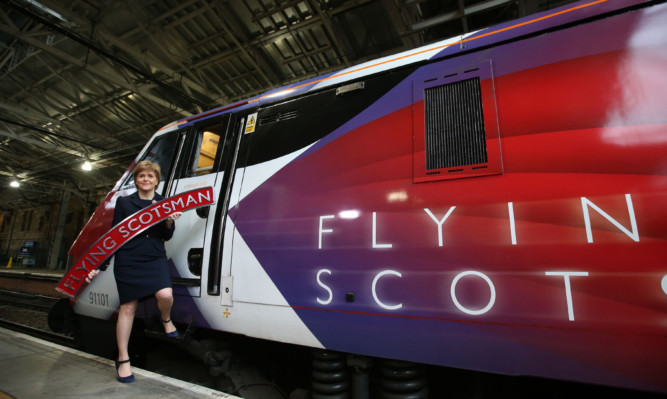A new-look train for the Flying Scotsman route has been unveiled during a ceremony in Edinburgh attended by First Minister Nicola Sturgeon.
Virgin Trains, which runs a four-hour express service from the Scottish capital to London, has re-liveried a locomotive to promote rail travel to and from Scotland.
The unveiling took place at Edinburgh Waverley station as the company announced a £16 million contract to refurbish engines for its high-speed trains, which are serviced and maintained at its Craigentinny depot in the city.
Ms Sturgeon said: “For over 150 years the Flying Scotsman service has connected Edinburgh and London by the historic east coast rail route.
“It is wonderful to see the name of the Flying Scotsman train kept alive on the route with a new, contemporary design.
“I am also delighted that the refurbishment of Virgin’s diesel engines will draw on the local skills and talents of the Craigentinny workforce.”
David Horne, managing director at Virgin Trains on the east coast route, said: “We are thrilled to continue the legendary name of the Flying Scotsman.
“Flying Scotsman trains brought style to the railways for many years.
“Our new train is a design twist on the legendary Flying Scotsman, recreating the glamour of rail travel for the 21st century, using our distinctive Virgin brand and style.”
The £16 million deal with engine manufacturer MTU will see all 35 diesel engines refurbished over the next two years.
Mr Horne added: “We are pleased that the work to install the engines, which will also be in Virgin red, will take place in Edinburgh.
“We continue to play a key role in the economy of the capital and Scotland as a whole, where more than 700 of our workforce are based.”
The original steam locomotive was built in Doncaster for the London and North Eastern Railway, emerging from the works on February 24 1923 and given the name Flying Scotsman after the London to Edinburgh rail service which started daily at 10am.
It was retired in 1963 by British Rail and ownership changed hands among several rail enthusiasts before the National Railway Museum bought it for more than £2 million.
The train is now undergoing complex restoration work.
